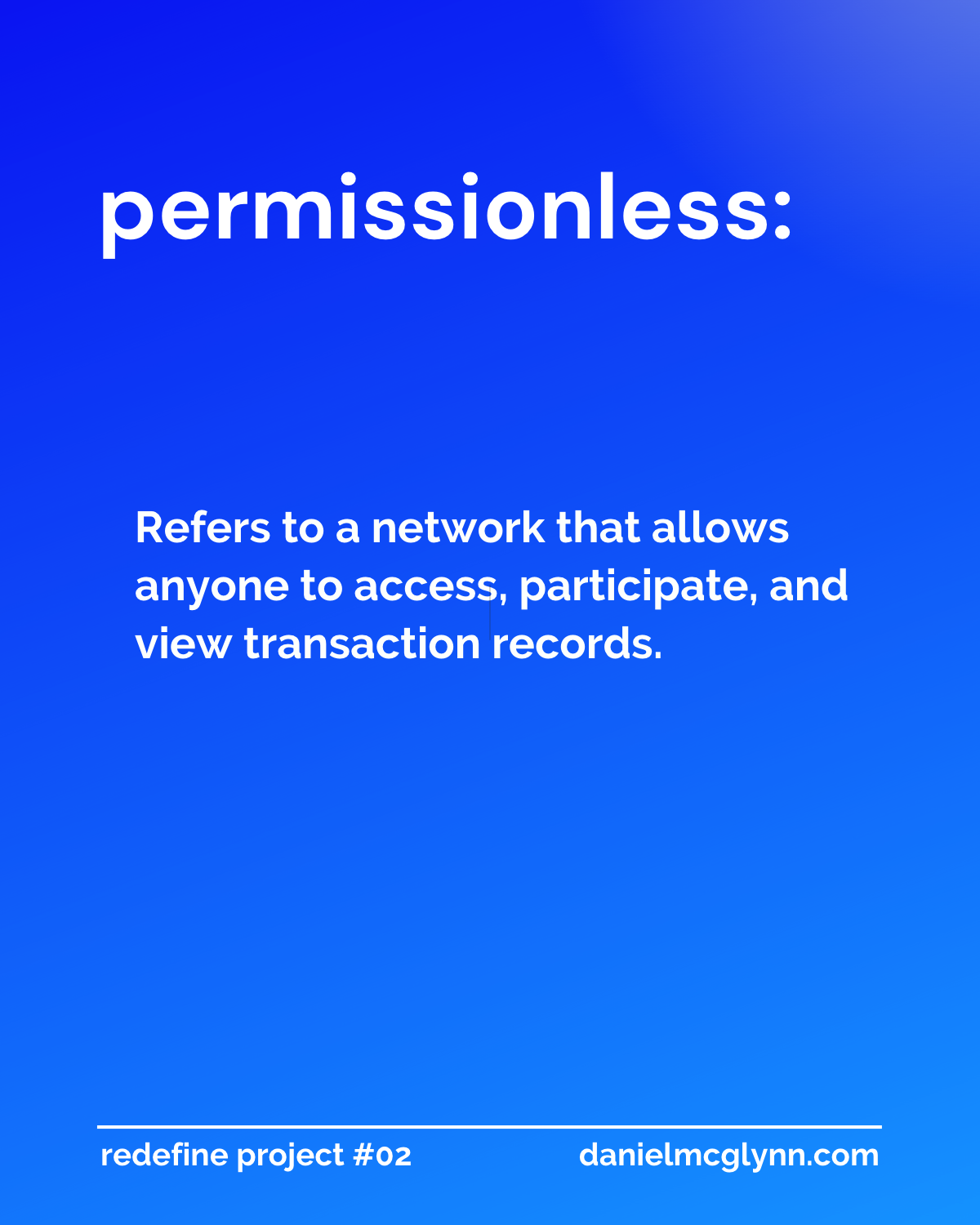Permissionless is one of core concepts or foundational pillars for building decentralized cryptocurrency systems and networks.
Permissionless is also a fancy way of saying public, or open access.

At its root, permissionless means that anyone can participate in all aspects of the way a blockchain functions — from running a node to viewing the transactions recorded on-chain.
In a permissionless system, there is no administrator or authority figure. There are also no requirements to participate such as credit score, annual salary, employment status, or accredited investor status.
But that’s not to say that permissionless systems are kind of like lawless lands where anything goes.
Instead, permissionless systems, like a blockchain, are governed by clearly defined, code-based rules that are enforced by the network itself.
So, we are talking about access. By the nature of their design, permissionless systems are at least universally accessible to the people that have the right tools and technologies to use them.
It’s like the ultimate opt-in.
Why is permissionless important?
There is a reason why permissionless is a crypto primitive — decentralized systems can’t exist as walled gardens. Walled gardens have gatekeepers and gatekeepers are, by design, in place to control access.
So in this way, decentralization and centralized entities, organizations, companies, etc., are as similar as a hammer and a screwdriver.
Beyond access, one of the major advantages of permissionless systems is that they are transparent and equally transparent to all network participants (and for that matter transparent beyond the network).
The double-edge of openness and transparency is mapped out in such a way to create and inspire wide-reaching network use and adoption. This in turn, enhances underlying network effects and strengthens the network from a security perspective.
There are downsides or drawbacks from permissionless networks. The biggest, for many, is that the cost of transparency is privacy.
So one area of development within permissionless frameworks is to create networks that are both transparent (in terms of view transaction details), but also protect user privacy.
The other drawback is that permissionless networks, because they are based on an architecture of distributed nodes and not a centralized data structure, have lower performance in terms of time to compute a transaction (and reach final settlement).
This is one of the many facets of crypto that requires a leap of thinking to grasp — the opposition between the model of the internet that we have now (defined by gatekeepers, monopolies, and walled gardens) and the internet that could exist according to the principles of decentralization.